Mount Mulligan Lodge in the outback delivers luxe in the dust
An outback lodge with history and mystery

Sitting on my bed, neatly stashed in a basket, are a pair of goggles, a neck buff, a water bottle and an invitation to bring all three items for an excursion in the morning. We’re going to hit the dirt trails of Mount Mulligan Lodge in all-terrain vehicles. The North Queensland wet season was long this year but the rivers have receded and the paddocks of this 28,000ha outback station look parched. Our guide, Toby Nahrhaft, advises that the lead ATV will kick up a lot of dust and those travelling behind will eat it. I’m driving the second vehicle. I duly don the goggles and pull the buff over my mouth and nose.
And what a lot of fun these ATVs prove to be. After a few tentative touches on the accelerator, we are soon churning through dirt and sand, over rocks and through ravines gouged by rain at speeds of up to 55km/h. With their chunky tyres and high clearance, the ATVs seem indestructible. I’m reminded of those cute critters on 1970s TV show The Banana Splits, zooming around the sand dunes in their buggies — but with a touch of Mad Max.
Our jaunt to Branch River, past herds of curious Brahman, takes us to a picnic table in the shade. Leaving our four-wheeled chariots, we hike up to the base of the ochre-hued sandstone cliffs that ring Mount Mulligan, a 12km-long tabletop also known as Ngarrabullgan that forms the dramatic backdrop to the lodge. This is Djungan country and Aboriginal legend has it that an evil spirit called Eekoo lives on the peak, rendering it a no-go zone. Instead, we opt for a halfway point where caves carved by wind and rain look across a vast orange savanna dotted with green like a Fred Williams painting.
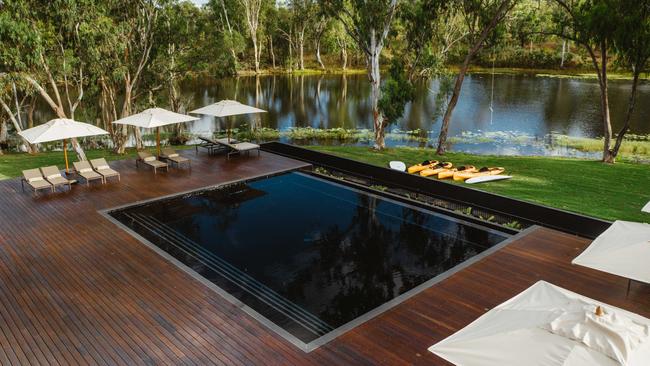
When we descend back to our shady corner, Toby and general manager Jody Westbrook offer refresher towels and conjure a picnic basket packed with freshly baked banana bread served with caramel butter, pots of leaf tea and fresh fruit. It’s one of the wonders of this luxury property west of Cairns that guests can get their hands — and faces — dirty, safe in the knowledge there will be a cool flannel, and an even cooler glass of pinot grigio, waiting when they return.
The contrast between the rugged outback setting and the elegant lodge within it is dramatic but they complement one another. Perched beside a weir ringed with river gums, paperbarks and fluoro-green lily pads, and surrounded by springy lawns, the main pavilion is a stunning piece of architecture.
Huge timber pylons salvaged from an old pier in Pyrmont, Sydney, stand sentinel along the wide veranda and form cross beams inside in the restaurant and lounge. The towering chimney of the fireplace is made of pale river rock, creating a huge textural canvas that, on our visit, is awaiting the arrival of an indigenous artwork. The walls are Queensland red gum that has been charred black in a Japanese process known as yakisugi, and the floors are spotted gum. Dining chairs are a sophisticated take on camp pews, though infinitely more comfortable; even the powder rooms, with oxidised metal wash basins shaped like animal troughs, have a rustic appeal. Folding doors lead to a black-tiled swimming pool that reflects a mirror image of the eucalypts and Ngarrabullgan behind them.
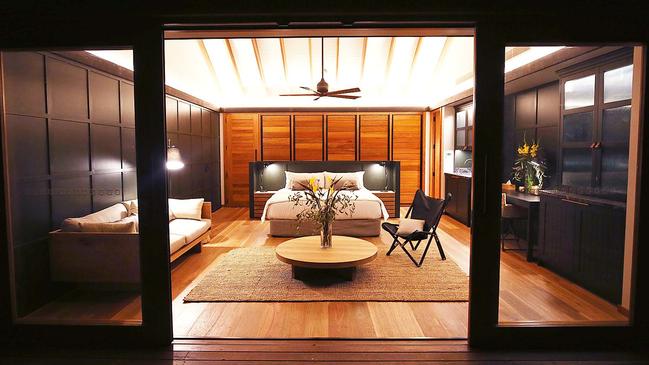
We’ve arrived here in style in one of Nautilus Aviation’s gleaming red helicopters, which took us from the lush environs of Cairns, over Barron Gorge and the Kuranda Scenic Railway, and past Atherton with its neat banana and avocado plantations. At some point we crossed a line, leaving the tropics behind and entering a landscape of sweeping savanna where a wedge-tail eagle matches our altitude, riding the thermals.
One of a trio of properties in the Morris Group’s Northern Escape Collection in Queensland, along with Orpheus Island off Townsville and Daintree Eco Lodge further north, Mount Mulligan Lodge opened in April. It takes outback luxe to a new level. Accommodation, for an intimate 16 people, is in three categories, Outback Room, Retreat and Pavilion, and each is of generous proportions. The decor is modern but with an abundance of natural materials — timber louvres, earthy textiles and winged kangaroo-leather chairs. Bathrooms stocked with LaGaia Unedited amenities are clad in sleek dark-grey tiles with black tapware, and on the hardwood deck is a delightful corrugated iron bathtub looking over the weir. The pavilions, ideal for groups of four, have a central living area with inviting leather lounges and a slow-combustion wood heater. Parked outside is your own personal electric buggy.

It all combines to create an aura of understated affluence that would shock the miners and their families who came to the area following the discovery of gold on the Hodgkinson River in 1876 by Irish-born surveyor James Mulligan. A bumpy drive along a dirt road brings us to the Tyrconnell gold mine, which 140 years ago employed more than 2000 men to extract the precious metal from a quartz reef. Some of the original buildings from those days still stand, and the rusting lifts that once transported miners 210m below the surface are propped like skeletons next to the fenced-off pit.
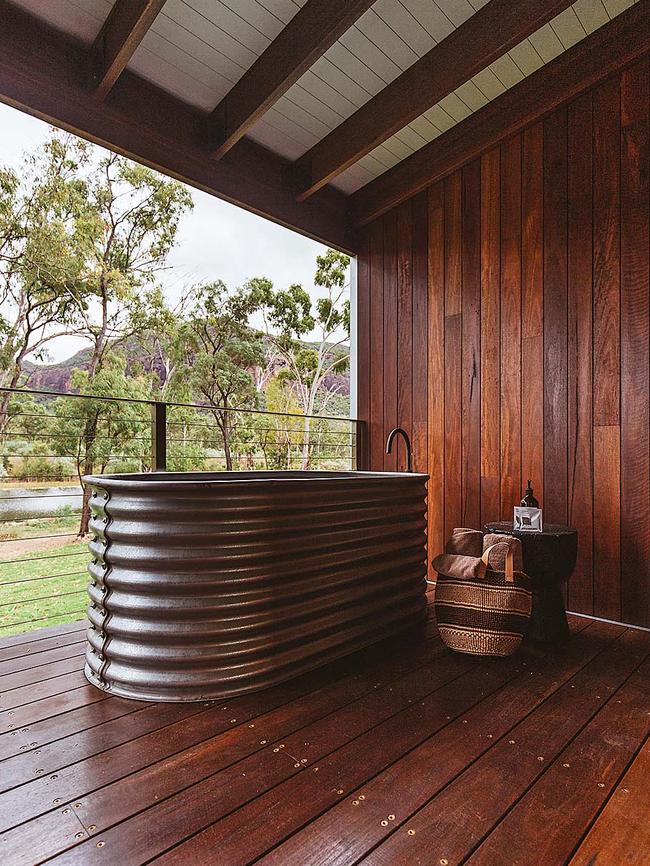
Toby leads us to the crusher plant, where Bailey, a laid-back young local with a broad country drawl and a passion for mechanics, is waiting. Astonishingly, this antique piece of equipment still works and he treats us to a cacophonous display of its powers. Tyrconnell was enormously profitable during its heyday, but its isolation and heavy reliance on water, an unreliable resource in these parts, eventually saw its demise in 1942.
As the sun sinks below Ngarrabullgan, we sip glasses of rose at the Sunset Bar, a cavernous tin shed specially built at a prime lookout spot. We admire the pinkening sky, nibbling on emu ceviche and other canapes before being delivered back to our quarters by ATV to freshen up. Dinner is served by the fire in the main pavilion. My vegetarian companions are looked after well but I’m happily diverted by eucalyptus-smoked red emperor served on a crispbread with roasted zucchini and red capsicum, and a main course of tender kangaroo loin. The hung cheesecake with caramelised coconut defeats me but I eat every single one of the candied walnuts that encircle it.
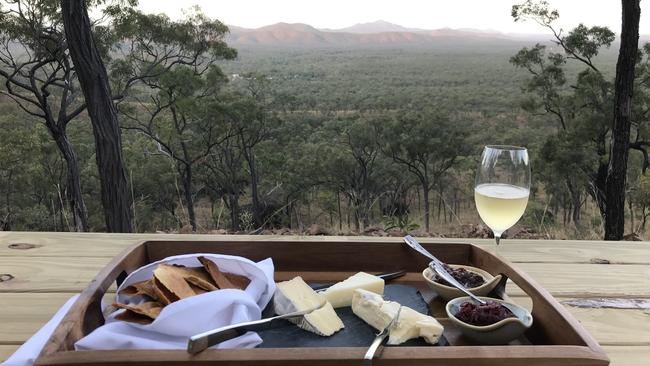
During my stay chefs Amanda Healey and Simone Watts work wonders in the kitchen. Their breakfasts set guests up well for a day of activity with the likes of fluffy wattleseed pancakes with caramelised orange, and smashed avocado on a slice of bread so wide it makes me wonder about the size of the oven. During the day, freshly baked cakes filled with jam and cream are piled temptingly on a stand near the self-serve bar. Guests are welcome to help themselves to a glass of Jim Barry cab sav from Coonawarra or a beer from Margaret River’s Colonial Brewing Company.
On the morning of my departure, I’m hoping to make an offering to Amanda and Simone, in thanks for all their culinary wizardry. I cast a lure out into the weir as mist drifts across the water. We’ve been up since the pre-dawn, doing an ad hoc yoga routine by the pool (mats are provided in rooms) as the sunrise turned Mount Mulligan from purple to magenta to bronze.
Now I’m on a mission. Somewhere out there, in the weir, is a barramundi with my name on it. It’s meditative to stand by the paperbarks, casting out and rhythmically winding the line in, over and over again. There’s a loud splash amid the lilypads nearby and I suspect I’m being taunted by my prey.
Eventually, I have to admit defeat. It’s time to head inside to warm up with a latte and another hearty breakfast. At least that fish will be fatter when I return.
Penny Hunter was a guest of Tourism and Events Queensland and Mount Mulligan Lodge.
-
More to the story
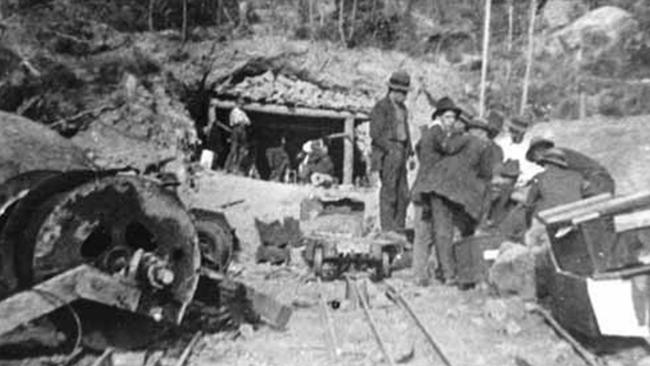
On September 19, 1921, Mount Mulligan became a name indelibly linked with tragedy. At 9.25am, a violent explosion at the coal mine rocked the prosperous township of 300 people. The blast, most likely caused
by coal dust or methane, was heard 60km away. In the town, children at their lessons and women going about their chores all knew something terrible had happened. Seventy-five men perished in the accident, taking a huge toll on such a tight-knit community; it remains the third most deadly coalmining accident in Australia. Visiting the site today is an eerie experience. When the mine finally closed in 1957, the residents moved on, taking entire houses with them.
A place that once boasted a railway station, picture theatre, two pubs, a post office, bakery, sports oval, Catholic Church and police station is a sprawling vacant lot, littered with rusting relics and spinifex. Remnants of the old power station, bath house and brick kiln still stand, as does the mine manager’s rusty tin shed. The entrance to the mine is largely caved in but stand in front of it and an extraordinary heat emanates from within. It gives some idea of the conditions miners must have worked in. Most sobering is the nearby cemetery, where so many of Mount Mulligan’s fathers and sons — some from the same family — were buried after the disaster.
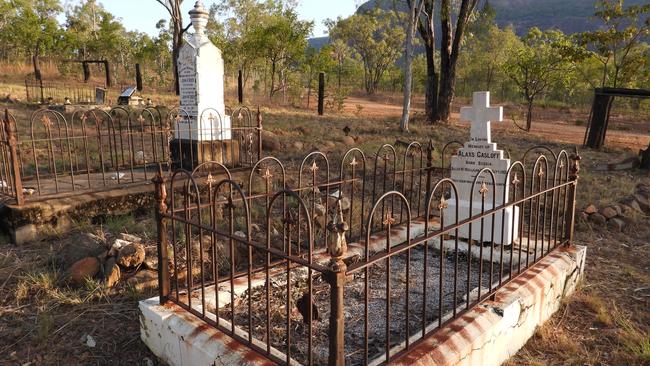
-
In the know
Mount Mulligan Lodge, a recent addition to the Luxury Lodges of Australia portfolio, is 100km northwest of Cairns, about 2½ hours’ drive by 4WD. Nautilus Aviation offers 35-minute helicopter transfers to the lodge. Accommodation ranges from $1700 a night for an Outback Room to $3300 a night for four people in an Outback Pavilion. Included are three meals daily, Australian beer, wine and soft drinks, minibar and daily activities.
■ mountmulligan.com
■ nautilusaviation.com.au

To join the conversation, please log in. Don't have an account? Register
Join the conversation, you are commenting as Logout